During the weekend of the first of November 2013, I spent four days on a family holiday in Les Vosges. As usual, I tend to pick out a destination with nice and varied landscapes and some interesting carabid populations. This time I chose ‘Les Vosges’ in North-east France and his Carabus nodulosus population.
Carabus nodulosus
Carabus nodulosus is a highly localised habitat directive species which occurs along forested mountain streams, at an altitude between 400 and 800 metres above sea-level. In France it is only found in a small part of Les Vosges and in Germany it has also a very limited distribution. The species also occurs in Slovenia, Croatia, Austria and a very small area in East Hungaria, but also only in scattered small populations. Sustainable populations are found where the humid alluvial zone, along small and slowly flowing forest streams, is broad enough. It is an extremely hygrophilous species, which often hunts under water and along the shores of stony small forest streams and brooks.

It is a stenotopic forest species, with a very low dispersion capacity. As a lot of the small forest streams at the mentioned altitude often have rapid flowing courses in a narrow gorge, the amount of suitable habitat along a small forest stream is often limited. Once suitable habitat is found, the species is not uncommon and can even be quite abundant.
The image under here shows very well the quite unusual shield structure of the Carabus nodulosus, with a rugged appearance and depressions.
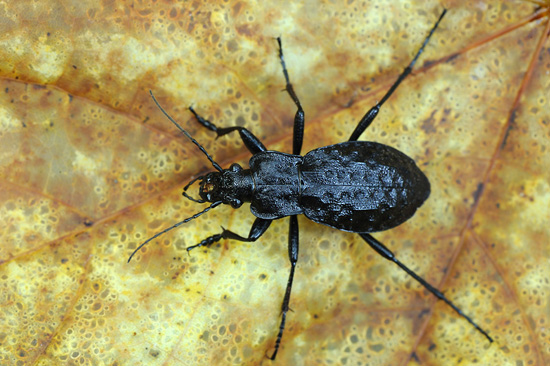
Why so localised?
The problem is that the suitable habitat often only consists of an area of a few hundreds of meters along the stream and is usually only a few tens of meters wide. These small patches of suitable habitat are frequently separated from each other by kilometres of unsuitable habitat. German researchers found out that these populations often consist of 50 to 300 individuals. As the species has a very low dispersion capacity these populations have often no contact with other populations. The only exception to this can happen after heavy rainfall, when specimens get washed away by the stream and wash ashore far away from the original population. The relative strong isolation of most of the populations, make the species very vulnerable to forest exploitation. As the species is stenotopic, it can suffer severely from intense forest activities and clearcuts along their habitat. Once struck by this, it is very difficult for the species to recover as the numbers have then declined to a critical amount. It is then often unlikely that the losses can be soon enough compensated by new colonisations from other viable populations. All these characteristics have made the Carabus nodulosus a localised and elusive species within its natural distribution. In Belgium, Switzerland and Italy the species is listed as 'extinct'.
Under here an image of the habitat where I found the beetle, and another image from the beetle taken at eye-level.


Magical light moments
Les Vosges is characterized by a high annual amount of rainfall and when I was there, the weather was no exception to this. On the third day, the mountains were packed in thick dark clouds and in the afternoon the sun scarcely pierced through the clouds. The sun seemed very stingy to share his energy as the piercing moments seemed to last only a few tens of seconds. I had already observed several times some interesting photographic opportunities, but I was always too late for taking the picture. So I decided to wait at a good view-point and lay my camera ready in the car, as in between the sunny moments, it was very windy and raining hard.
Meanwhile I could make some landscape pictures with threatening black clouds.

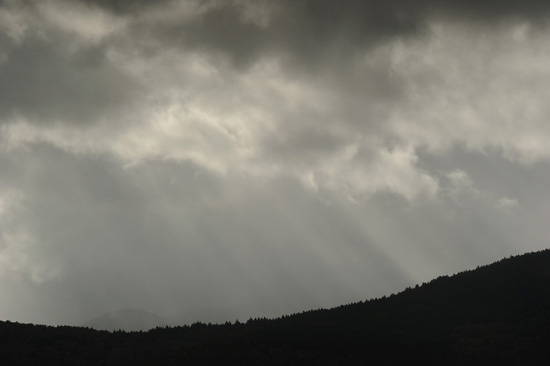
After one and a half hour I got rewarded with some of the unique moments, as shown under here.
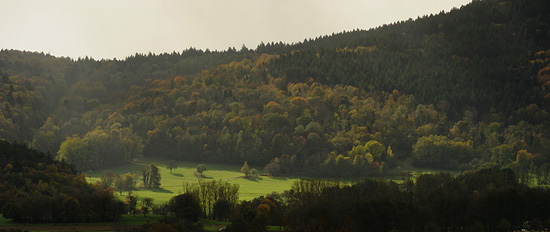
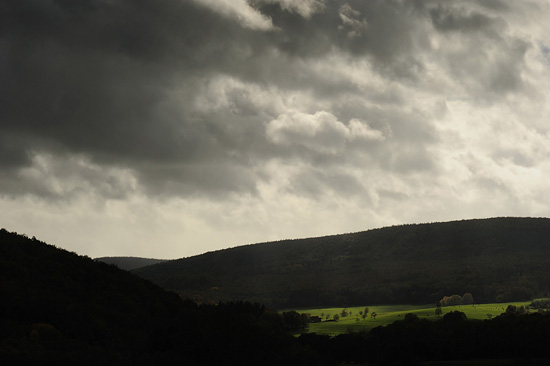
More ground beetles.
On the hilly slopes around Wintzfelden, Carabus intricatus, usually not a very numerous species, was the most abundant Carabus species. Here are some images of this gorgeous species.
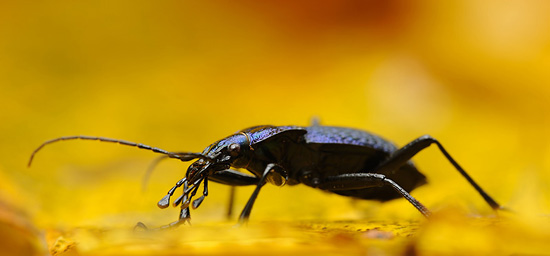
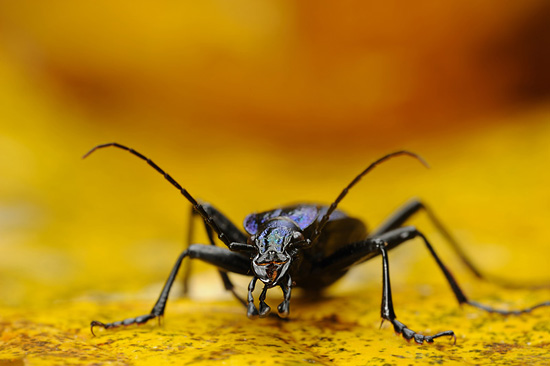
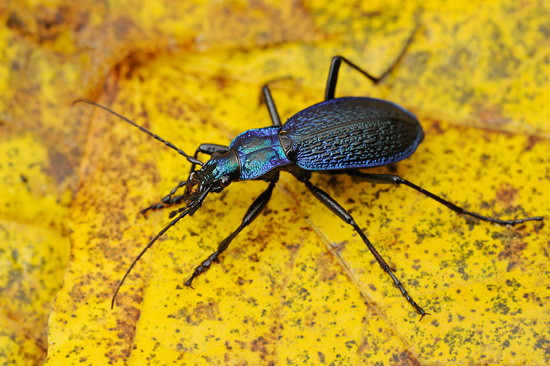
Crystal Drops
On the second day, I found Carabus auronitens to be quite numerous in the high altitude beech forests around the Lac Du Grand Ballon.
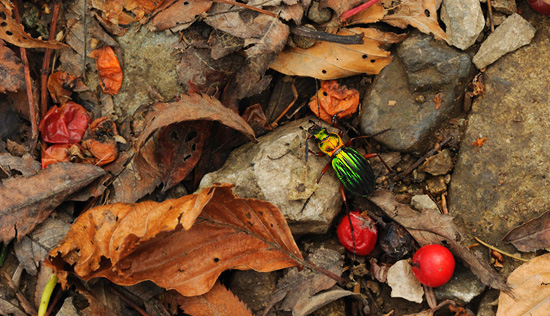
When I found a wintering specimen under the bark of a beech, I was happily surprised to see the beetle’s shields covered with condensation drops. When I took my first photograph and zoomed in on the image, I was struck by the mind-blowing beauty of the crystal drops on the colourful beetle. Then I decided to go for a mega macro detail. I used my 100 mm lens, with a 2x converter on a D300s , and thus I obtained a 3:1 life size macro enlargement. Here is the result.
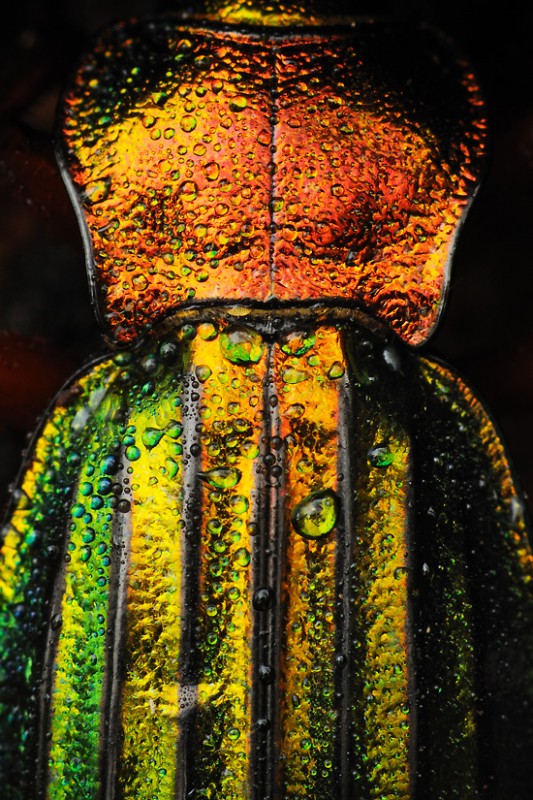
Impressionist setting
When we were driving back home on Sunday, we passed through a forest patch where my attention was caught by the spectacular amounts of striking red Rowan berries against a dark background. As it was a very rainy day, the colours were very vivid and fresh. When sun pierced very gently trough the clouds, the colour spectacle with a mixture of dark conifers, orange and yellow beech- and birch leaves, was really magical. If still alive, Claude Monet would definitely have been jealous not to have this impressionist setting in his garden at Giverny!
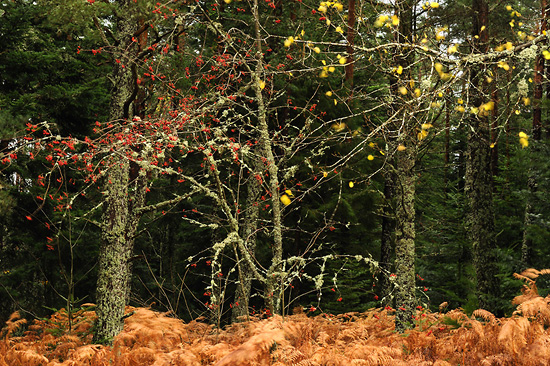
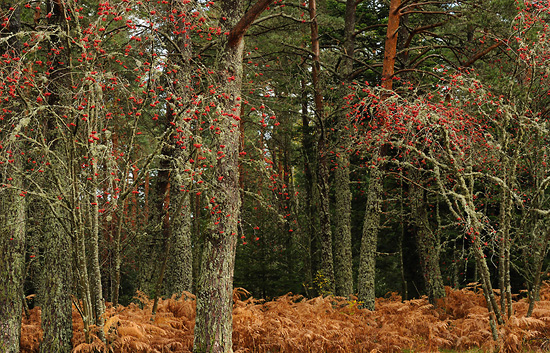

If you want to see more images from Les Vosges, please click here.
